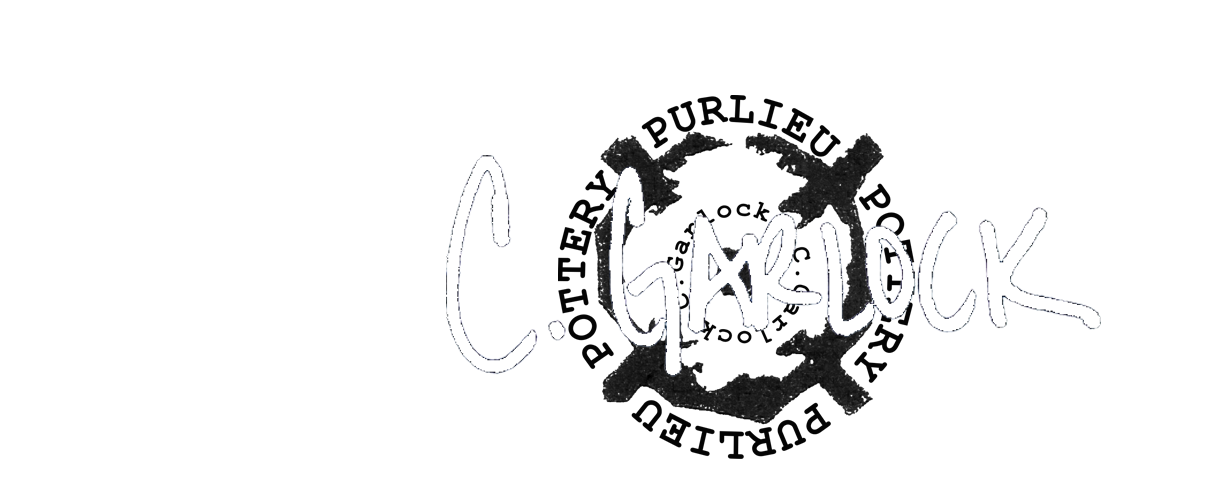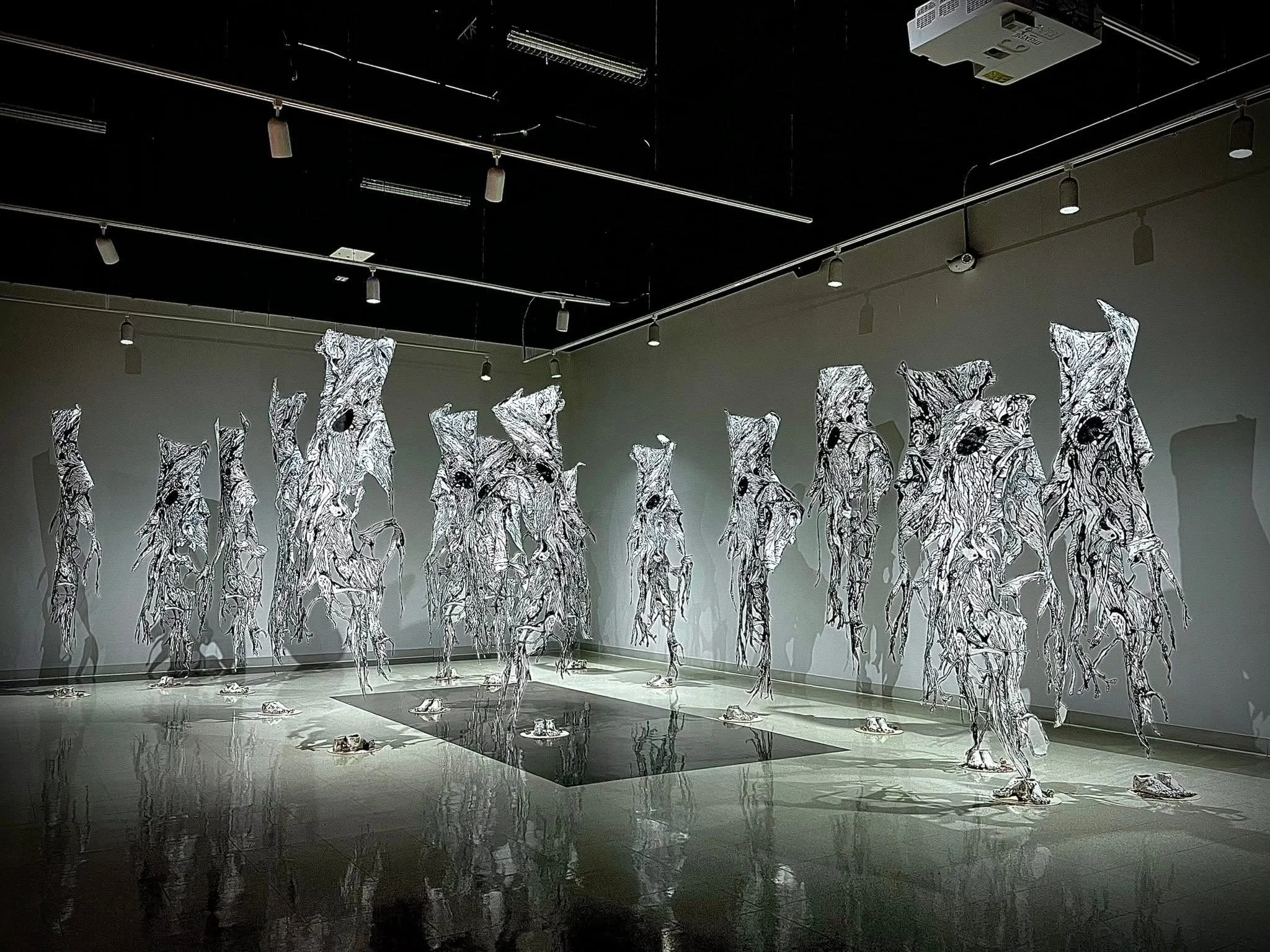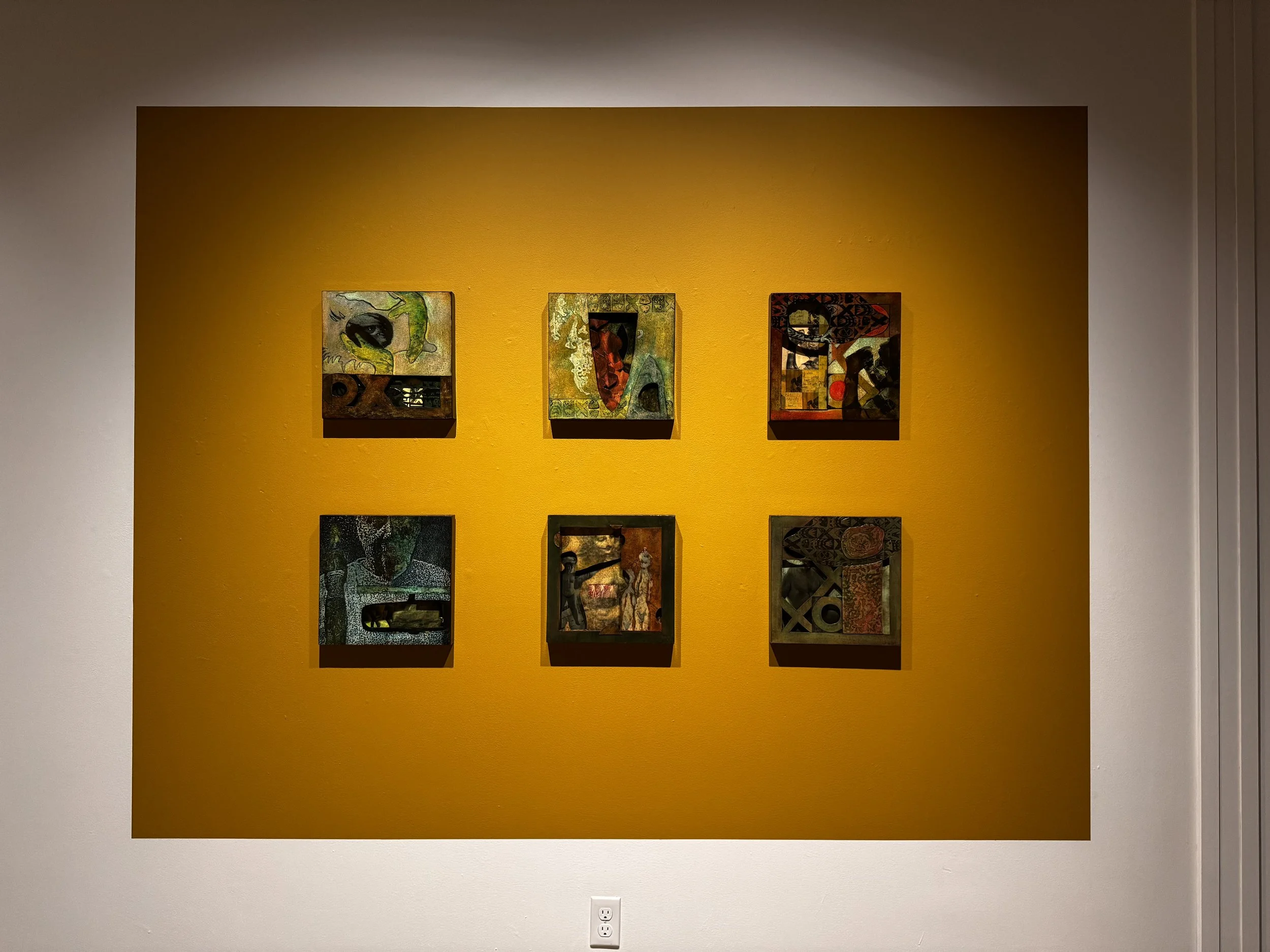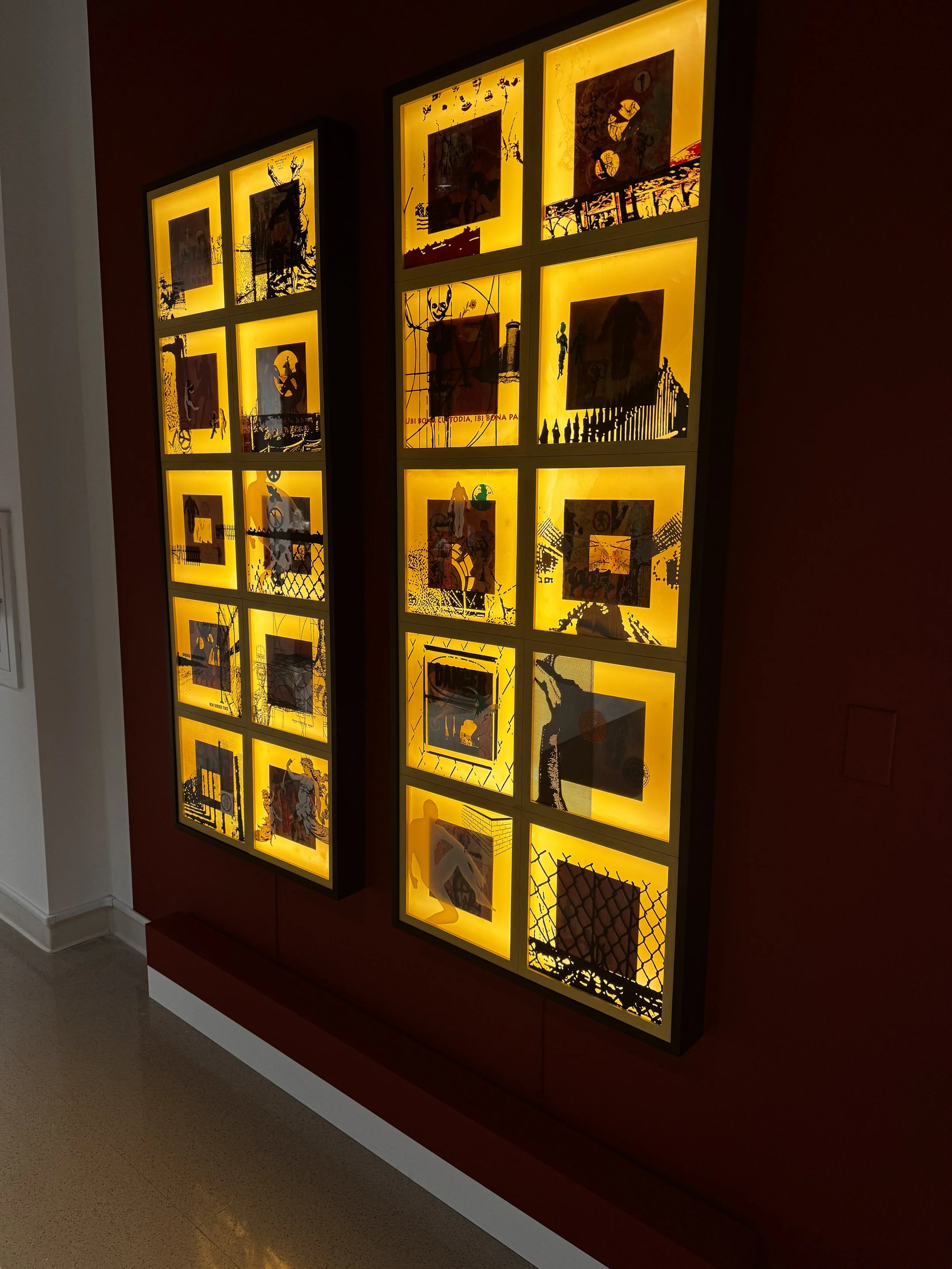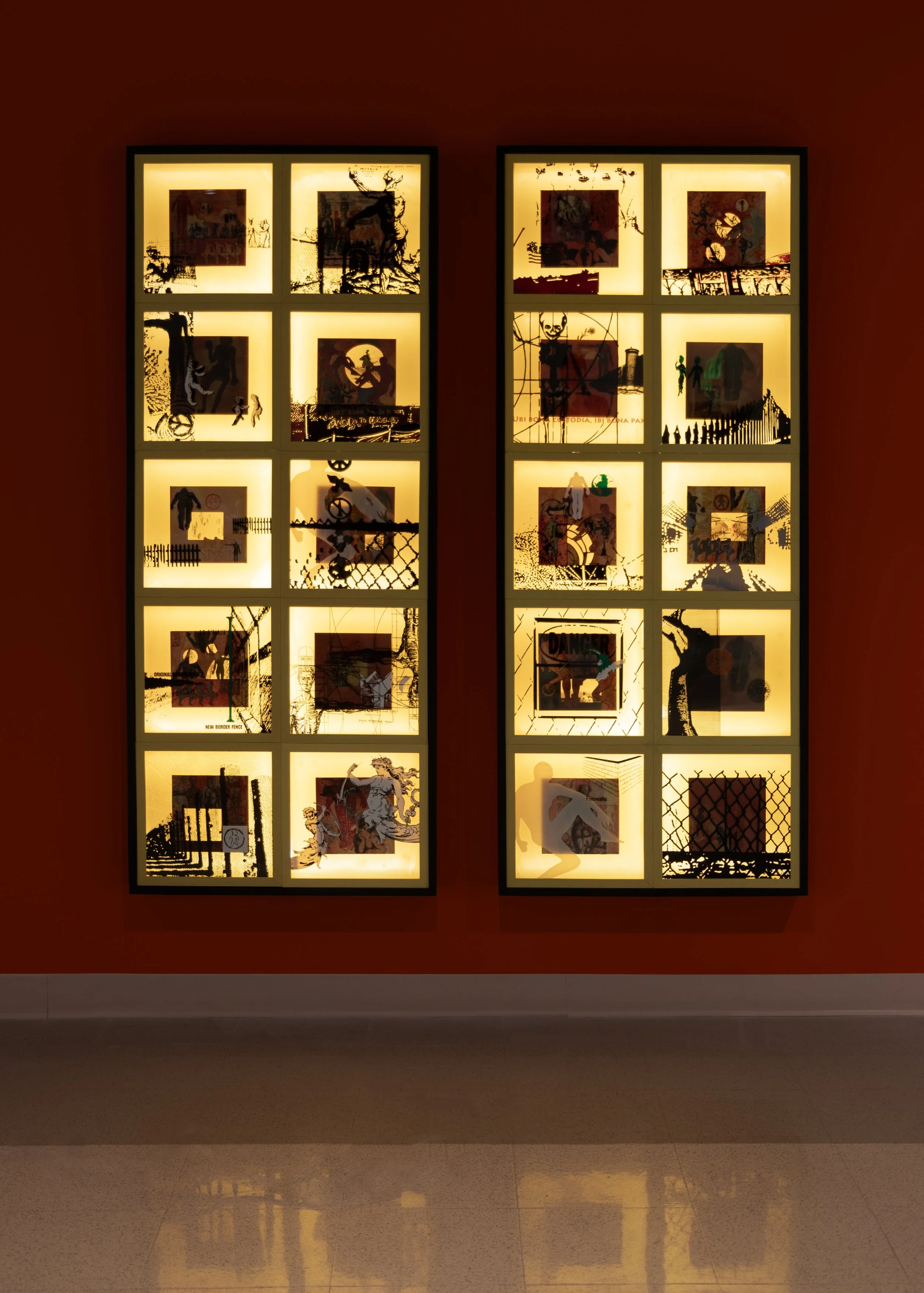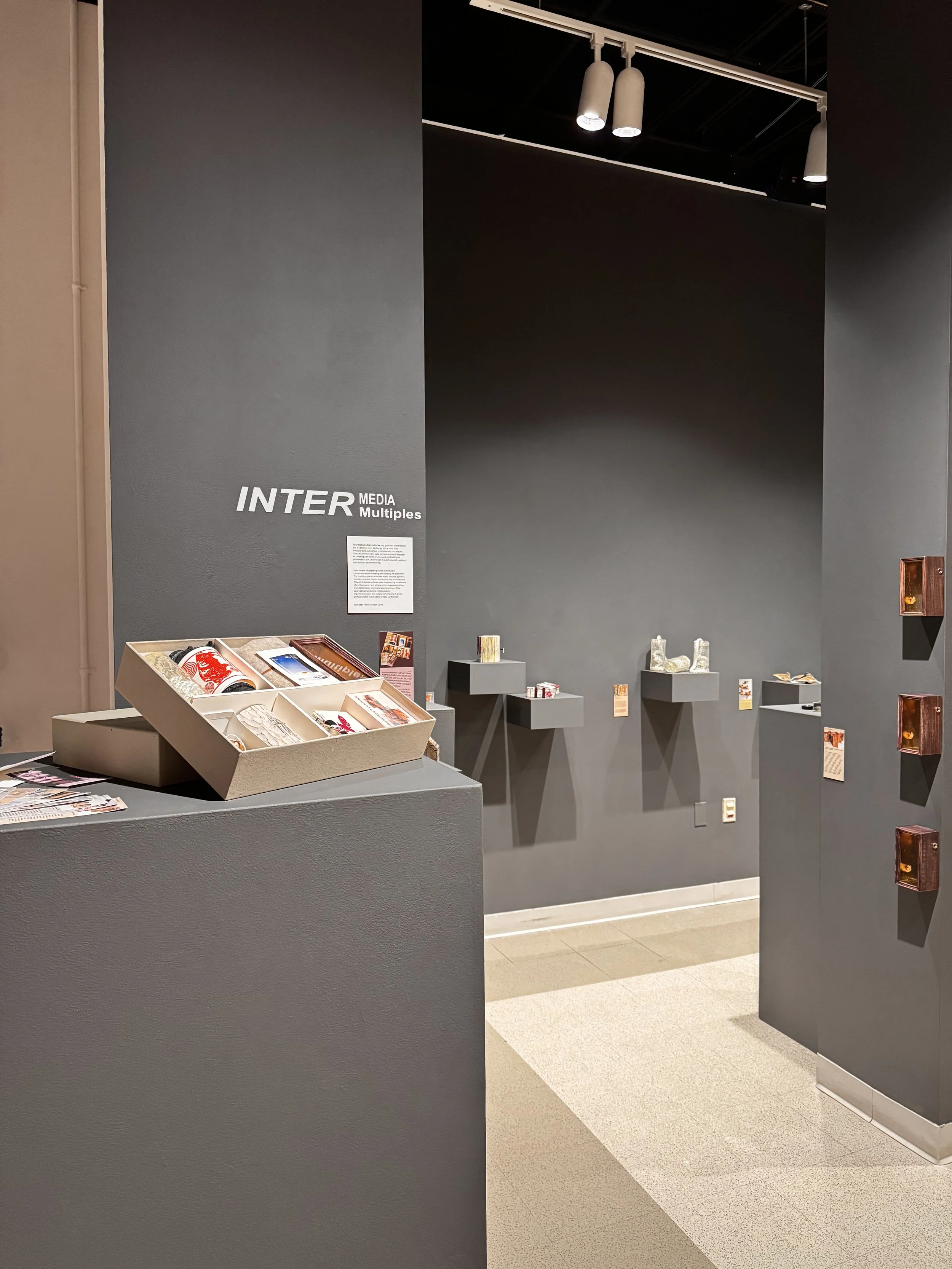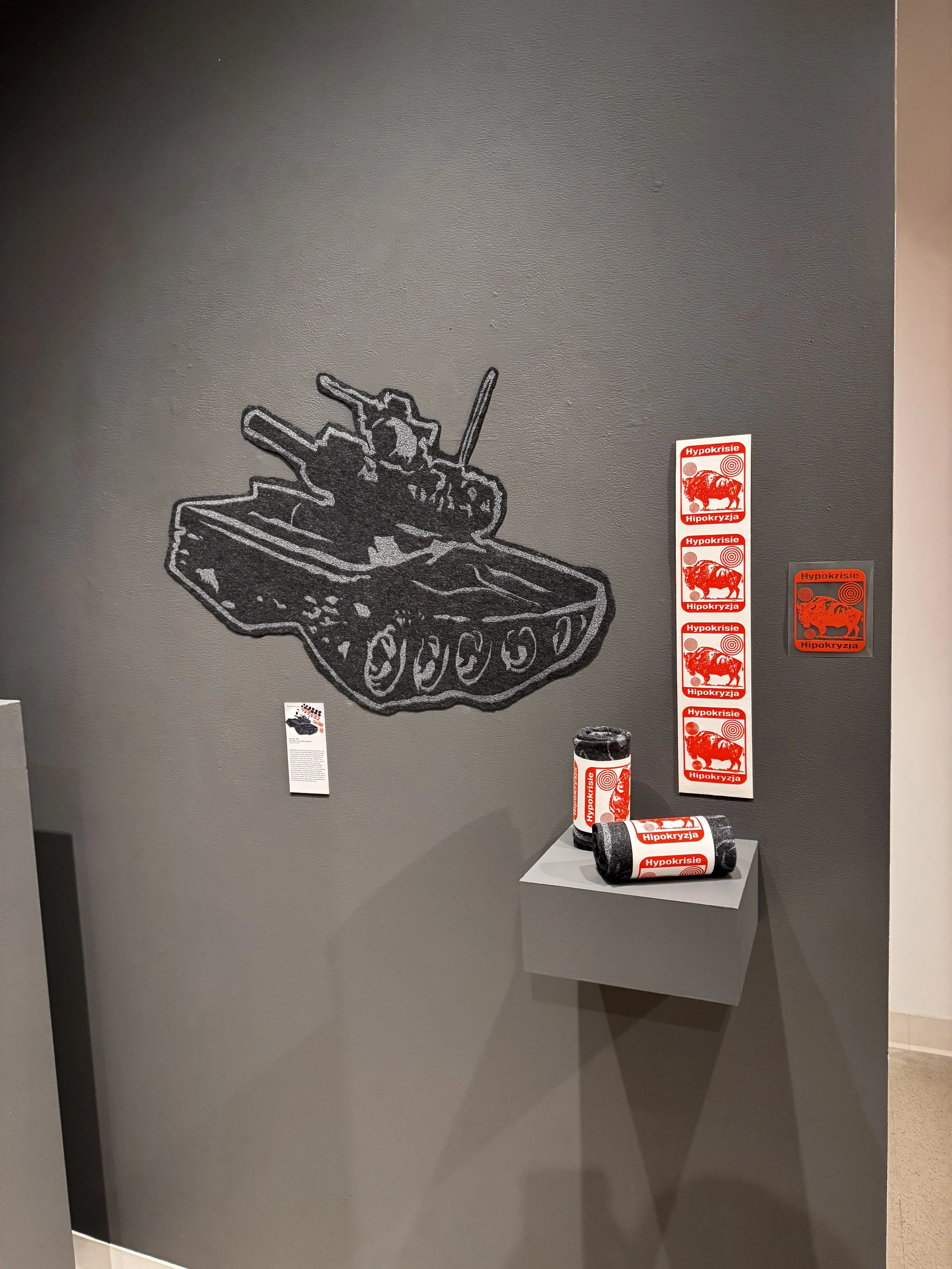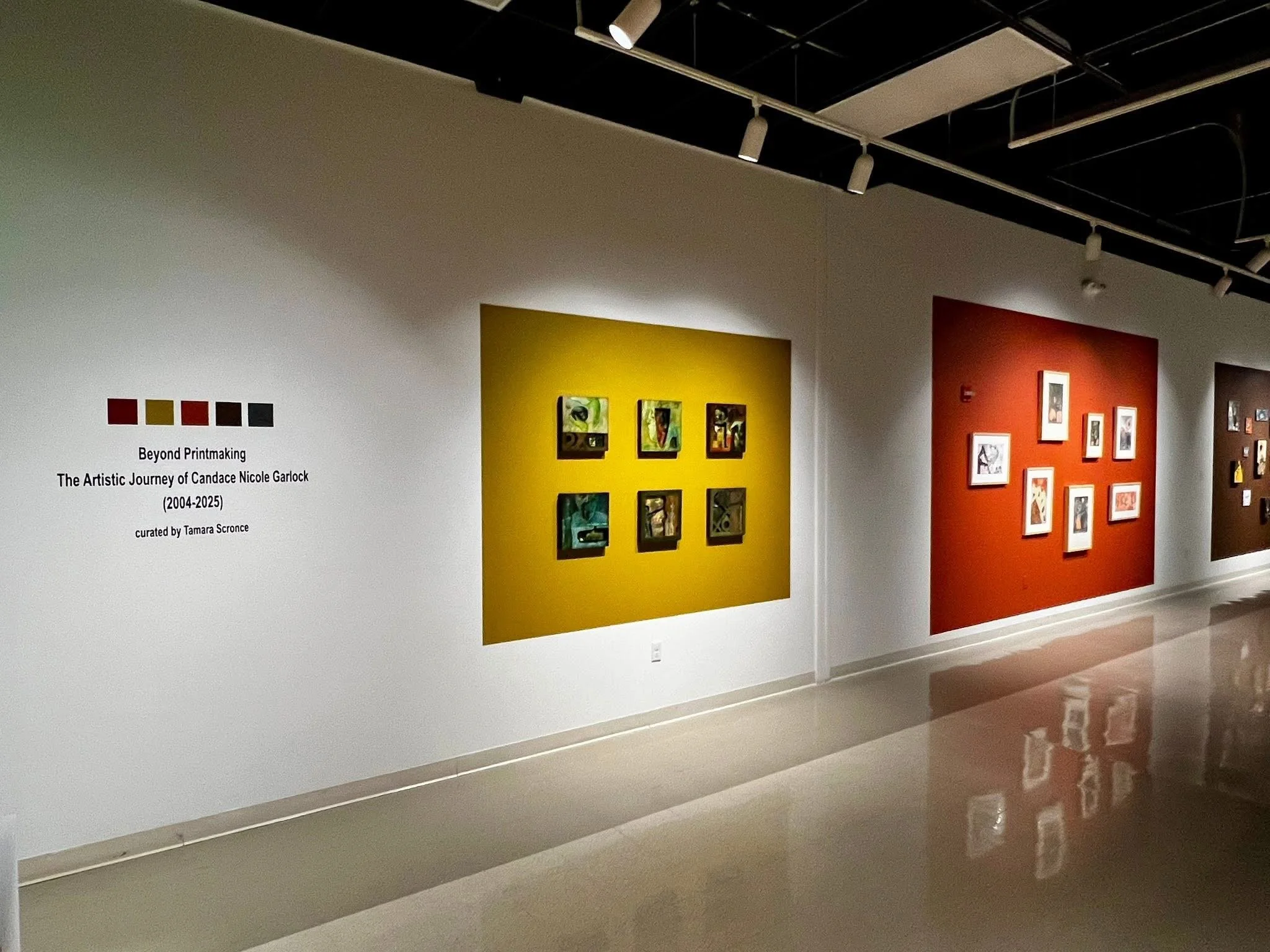Beyond Printmaking: The Artistic Journey of Candace Nicol Garlock (2004-2025)
The TMCC Main Gallery, October 2025: “Beyond Printmaking: The Artistic Journey of Candace Nicol Garlock (2004–2025),” curated by Tamara Scronce. This exhibition looks back at over two decades of work by artist and TMCC Visual Arts Professor Candace Nicol Garlock, focusing on her progression from traditional printmaking to broader artistic exploration. According to the release, “Beyond Printmaking celebrates more than two decades of work by artist and TMCC Visual Arts Professor Candace Nicol Garlock, tracing her evolution from traditional printmaking into a fearless exploration of new forms and ideas. The exhibition highlights Garlock’s restless creativity, resilience, and unwavering commitment to her craft.”
Garlock began her career as an undergraduate at the University of Nevada, Reno, where she studied various printmaking techniques including etching, intaglio, lithography, and woodcut. These early experiences helped shape a practice that now extends beyond traditional boundaries through experimentation with materials and forms.
The exhibition is organized in chapters that showcase different aspects of Garlock’s studio practice. “Each section reveals a different facet of her artistry, encouraging reflection while celebrating the adventurous spirit that defines her work,” according to organizers.
To purchase catalog visit Blurb.com Candace Garlock
Never Out of the Woods Installation. Photo credit: Frances Melhop
Tamara Scronce:
As curator, my goal is to present an exhibition that honors the ever-evolving and fluid nature of Candace Nicol Garlock’s artistic journey. Candace is a dynamic force—restless, constantly evolving, and unafraid to explore new territories. This exhibition features artworks from over two decades, highlighting the thoughtful and often experimental processes that have characterized her creative practice.
Though deeply rooted in traditional printmaking, Candace’s work transcends these boundaries. Her artistic practice has consistently pushed beyond printmaking. This curated collection offers a glimpse into the mind and spirit of an extraordinary artist: one who is fearless, intellectually rigorous, generous, courageous, resilient, and, above all, deeply committed to her craft.
Candace’s journey began as an undergraduate student at the University of Nevada, Reno where she discovered the transformative power of art and creative expression. It was in the printmaking studio, under the guidance of exceptional mentors, that she first engaged with traditional techniques—etching, intaglio, lithography, woodcut, and more. These methods formed the bedrock of her early artistic development and set the stage for a broader exploration of materials and forms.
While printmaking remains at the core of Candace’s practice, she has continually pushed the boundaries of the medium. Instead of adhering strictly to tradition, she uses her expertise in printmaking as a springboard for experimenting with new materials, processes, and techniques. Each body of work explores color, texture, line, and form in unexpected ways, resulting in pieces that are not only visually captivating but rich in meaning and content.
Beyond Printmaking is organized in what I think of as chapters or stories that span Candace’s substantial studio practice—offering viewers opportunity for pause and reflection as they move through the exhibition. Together, these diverse works allow us to appreciate Candace’s strong foundation in printmaking while celebrating her adventurous creativity which embraces a wide range of aesthetics, medium, and form.
Candace Nicol Garlock’s art practice traverses many paths, yet the unifying theme throughout is her unwavering drive to use visual art as a means of contemplating and communicating the human experience—both her own and ours. Her works speak to complex emotions and ideas, using visual language as a form of personal reflection, social commentary, and connection.
Candace and Tamara, Reception, TMCC, 2025
Building Dimension by Aleina Grace Edwards
There are many truisms about the development of our individual identities: that our personalities are the results of both nature and nurture; that we are the sum of the people closest to us. Yet the social pressure to delineate and categorize—to separate, to distinguish—seems stronger than ever. Ever perceptive and interested in synthesis, Nevada artist Candace Nicol Garlock has made a career of integration, of aggregation. Ceramicist and teacher, printmaker and painter—there is no singular way to describe her art practice. But printmaking is a constant element across her work, a tool for ongoing exploration of the self and culture, of experimentation and adaptation.
The influences of Garlock’s family and cultural contexts accumulated into her earliest print-based artworks. Garlock grew up in rural Nevada in a strict, even repressed family that turned away from the realities of the body and the darker corners of the mind. But Nevada’s casino-culture offered different images: women for show, skin on display. These were unabashed bodies. The layers of imagery in the “Familial Inure” series—mostly collagraph assemblages—from the early 2000s represent overlapping, often contradictory memories and messages inspired by this childhood of paradox. Collagraph prints were the perfect vehicle for creating these contradictory experiences: they were relatively cheap to make—Garlock was scrappy, arranging her images on donated matboard from frame shops—and the plates themselves became almost sculptural pieces, the images gaining dimension as Garlock layered them. This series exemplifies Garlock’s now-defining fascination with fragmentation, with the frustrating nonlinearity of the mind and body. Layers of collagraphs, solarplate prints, and polyester lithographs are glued to boards and cut out to reveal something else. An older memory might peak out from behind a more recent layer. A piece of pain surfaced from the past, carried forward.
TMCC installation, photo credit Art 141 student
Firewalls
Firewalls, Photo credit: Brandon Lacow
With all its layered imagery, Garlock’s work builds meaning and amasses a physicality truer with the mess of lived experience by stacking, splicing, and combining printed elements, Garlock’s “Firewalls” series—made in the cultural din of the post-9/11 world—combines multiple printing techniques, including screenprints, collagraphs, and gel transfers. These pieces distort space and scale in isolating scenes that read as warning signs. Anatomical drawings are stacked behind chain-link fences; pickets and bricks pen in the abstracted shapes of people. An American flag appears red and bloodied over a contemplative cherub; the word “DANGER” is emblazoned over tangled bodies. An amalgamation of hot button issues like immigration and war are tangled up in the layers of these images. The flag, the neoclassical symbolism. By combining images and prints on plexiglass, Garlock conveys the complexity—the multiplicity—of the American myth, and varieties of violence underpinning it.
In 2007, Garlock organized a collaborative printmaking project, “Intermedia,” inspired by Dick Higgins’ theory about the fusion of old and new media in art (he understood his own work as an “intermedia” practice, incorporating visual, musical, and literary arts.) Exchange participants were asked to focus on the multiple and the dimensional—one element endemic to printmaking, the other a bit of a surprise. Garlock’s pieces for the exchange—an edition of twelve—featured a male nude figure comprised of thirty-six puzzle pieces. The work subverts the seriality of the print and the integrity of the classical sculpture. These are not replicas or copies, but parts of a whole.
The idea of “fusion” is essential to the “Intermedia” project and Garlock’s contribution to it, but it also describes much of Garlock’s ongoing artistic inquiries and craft choices. Like Jerry McMillan, a photographer and artist who challenged the spatial rules of photography with his invention of photosculpture—photographic, three-dimensional objects—in the 1960s, Garlock takes the principles of distinct media and combines them into singular artworks. The “Firewalls” and “Intermedia” pieces can’t be easily categorized as either prints or photographs or sculptures. They borrow from all three forms; as a result, they become their own.
Installation shot of Intermedia Multiples. Artists:
Close up of John Hitchcocks work in Intermedia Multiples
Exchange, incorporation—the body can be a site of combination, of decoration. If the printmaking techniques in her earlier work began to illuminate the complexities and contradictions of our psychology, Garlock’s “Ornamen” pieces, largely focused on male nudes, show some alternative modes of being. Garlock reexamines bodily taboos across these pieces, closely examining the male nude, reconsidering the potency of adornment. Garlock has cited women artists using their own bodies as subjects in the ‘70s and ‘80s as inspiration—why not look at a man’s body with the same curiosity, approach his physicality with the same intimacy? She began with her husband as the subject of initial works, then incorporated friends and male models.
For each image, she uses an Epson printer to create the first layer, followed by a textural collagraph, and finally adds a photopolymer etching. She adorns her digital photos with glazes and screen prints, flattening the pictorial space with planes of color and delineated grids. Garlock also began experimenting with Photoshop to disrupt and obscure the light logic of each image. The results are more aesthetic than they are scientific—more decorative than descriptive. This series was about play, about invention, about technique. As she continued with “Ornamen,” Garlock developed a new viscosity printing technique using Borco Board. The finished combinations are organic and textural, evoking the physicality of human flesh, the expansion of chest with breath.
Ornamen Series. Photo Credit: Jerry_Art 141
So much of Garlock’s work has focused on untangling the mess and mistakes of the psyche, on examining and extrapolating political beliefs and social norms. When she was diagnosed with Multiple Sclerosis in 2011, after years of inexplicable symptoms, Garlock’s tendency to focus on her message, not materials, became essential. With impaired function and focus, drawing and painting felt prohibitive; ceramics and printmaking, on the other hand, offered some relief—a mechanical and meditative repetition.
Repetition, always important to the printmaking process, takes on a new significance in the works from the “Road to Terminus” series. A terminus is a boundary marker—the end of a line, the culmination of a journey. But “road” implies Garlock’s journey is ongoing. There are barriers, to be certain—body parts failing; pieces breaking off from the whole. In the works, figures scatter, but geometric lines and boundaried shapes appear to hold the scenes together—or splice them into smaller pieces. Empty space itself becomes a stronger presence than ever before. In the printmaking transference process, some detail is always lost—an appropriate parallel for a disease that gnaws at nerve endings. Perhaps Garlock keeps working to try and capture what threatens to dissipate and dissolve. Each piece seems connected to another, through subject and form. There are favorite motifs: birds and bones, cellular structure, gnarled tree roots or veins. Together, these works form an open circuit—a body both interconnected and imperfect. They are prints that resist the two-dimensional, sculptural forms flattened by pain, struggling against themselves.
Selections from the Road to Terminus Collection
